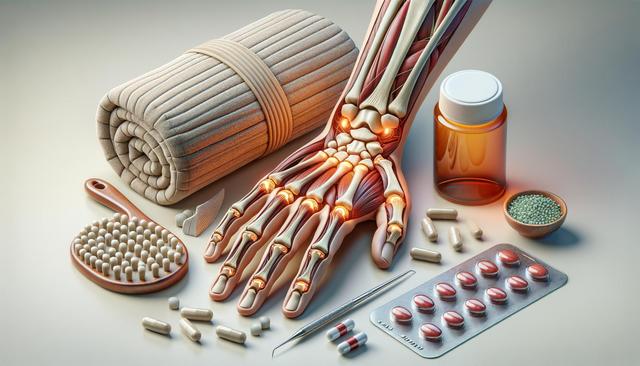Understanding How Arthritis Patches Work for Joint Relief
Arthritis patches are designed to deliver soothing or therapeutic ingredients directly through the skin to the affected joint areas. The way how arthritis patches work for joint relief typically involves transdermal delivery, where active ingredients penetrate the outer layer of skin and act locally to alleviate symptoms such as stiffness, inflammation, and mild pain. These patches can be a valuable addition to a broader arthritis management plan, especially for individuals looking to avoid oral medications or those with gastrointestinal sensitivities.
The effectiveness of these patches often depends on consistent and proper application. When applied correctly, they provide localized relief without impacting the digestive system, unlike some oral anti-inflammatories. This can be particularly helpful for people managing chronic conditions who need continuous symptom control over time without systemic side effects.
Ingredients Commonly Used in Arthritis Patches
The formulation of arthritis patches includes a variety of active ingredients, each offering specific benefits. Understanding the ingredients commonly used in arthritis patches can help users make informed decisions based on their unique needs and sensitivities. Common ingredients found in these patches include:
- Menthol – provides a cooling effect that can temporarily numb pain
- Capsaicin – derived from chili peppers, helps reduce pain signals in the nerves
- Salicylates – an aspirin-like substance that reduces inflammation
- Essential oils such as eucalyptus or camphor – offer both scent and mild anti-inflammatory properties
Some patches may also include additional supportive compounds like glucosamine or chondroitin, which are known to support joint health over time. However, these ingredients often serve more as supplemental support rather than immediate symptom relief.
When and How to Apply Arthritis Patches
Knowing when and how to apply arthritis patches is crucial for maximizing their effects and ensuring safety. Most patches are intended for external use only and should be applied to clean, dry skin over the affected joint. Users should avoid applying patches on broken skin, near mucous membranes, or on irritated areas. Here are a few tips for proper application:
- Always read the instructions provided with the patch
- Limit use to the recommended duration (typically 8–12 hours per patch)
- Wash hands before and after application to prevent accidental eye contact with active ingredients
- Rotate application sites to reduce the risk of skin irritation
Timing also matters. Some people find it helpful to apply patches in the evening to support overnight relief, while others may prefer daytime use for mobility support during daily activities.
Types of Arthritis Patches and Their Differences
There are several types of arthritis patches and their differences relate mainly to the ingredients, duration of effectiveness, and formulation type. Some patches are heat-activated, providing warmth that can soothe stiff joints, while others focus on cooling or anti-inflammatory effects. Here are the most common types:
- Thermal patches – generate heat to improve blood flow and reduce stiffness
- Analgesic patches – contain pain-relieving ingredients like lidocaine or menthol
- Anti-inflammatory patches – include NSAID-based ingredients for targeted inflammation reduction
The choice of patch often depends on the specific symptoms and preferences of the user. For instance, someone dealing with occasional flare-ups may opt for a fast-acting cooling patch, while another individual with chronic stiffness might prefer a slow-release thermal patch for sustained comfort throughout the day.
Using Arthritis Patches on Sensitive Skin and Alternatives
For individuals with delicate or easily irritated skin, using arthritis patches on sensitive skin requires extra caution. It’s advisable to test a small area first to ensure there’s no adverse reaction. Hypoallergenic or fragrance-free patches may reduce the risk of irritation. If redness, itching, or discomfort occurs, usage should be discontinued immediately.
In cases where patches are not suitable, there are several alternatives to arthritis patches and medical guidance should be considered when exploring them. These alternatives include:
- Topical creams and gels with similar active ingredients
- Physical therapy and joint exercises
- Oral medications, as prescribed by a healthcare provider
- Assistive devices to reduce joint strain
As always, it’s important to consult with a healthcare professional before beginning any new arthritis treatment, particularly if you’re managing other health conditions or taking medications that could interact with transdermal therapies.
Conclusion: Making Informed Choices for Arthritis Relief
Arthritis patches offer a convenient, non-invasive option for those looking to manage joint discomfort with targeted relief. By understanding how arthritis patches work for joint relief, recognizing the ingredients commonly used in arthritis patches, and knowing when and how to apply arthritis patches, users can make more informed decisions. Consideration of the types of arthritis patches and their differences also helps in choosing the most suitable option for individual needs, while those with sensitivities should be mindful of using arthritis patches on sensitive skin. For anyone seeking more comprehensive care, there are alternatives to arthritis patches and medical guidance always plays a key role in finding the right approach. With the right information and support, arthritis symptoms can often be managed more comfortably and effectively.




Leave a Reply